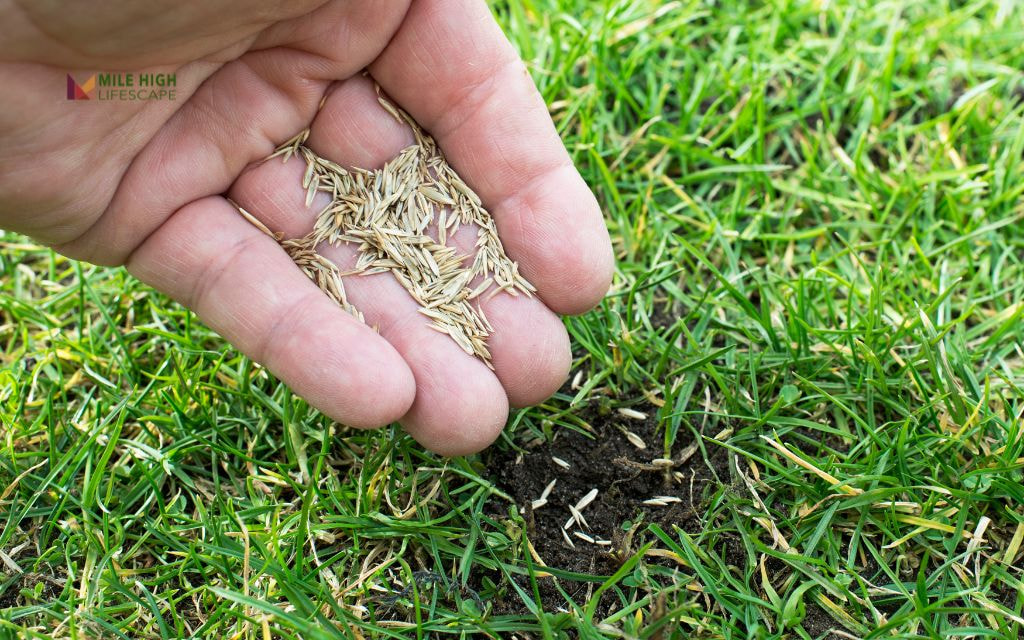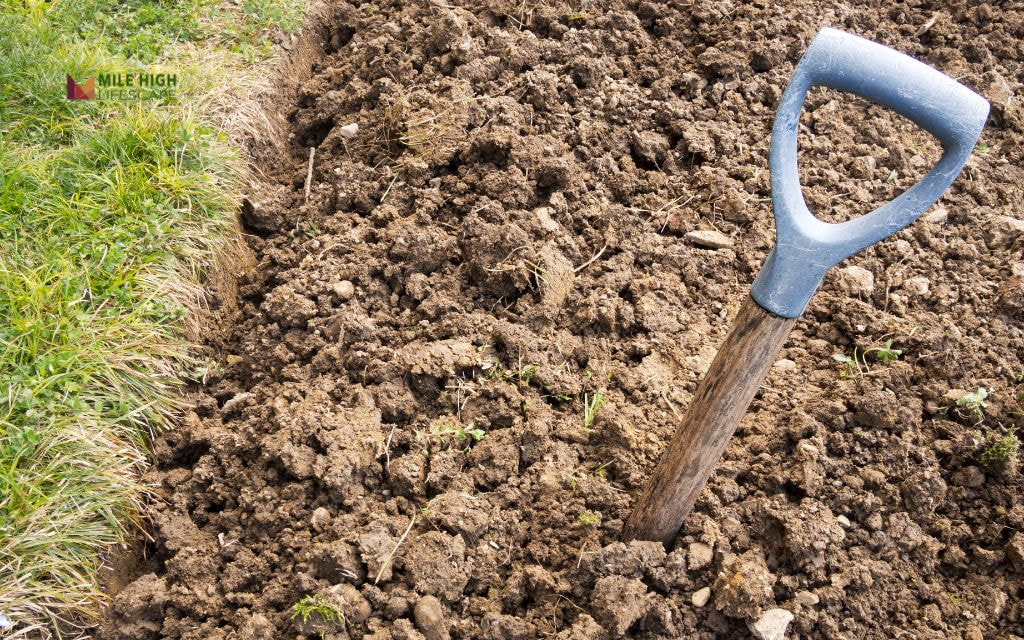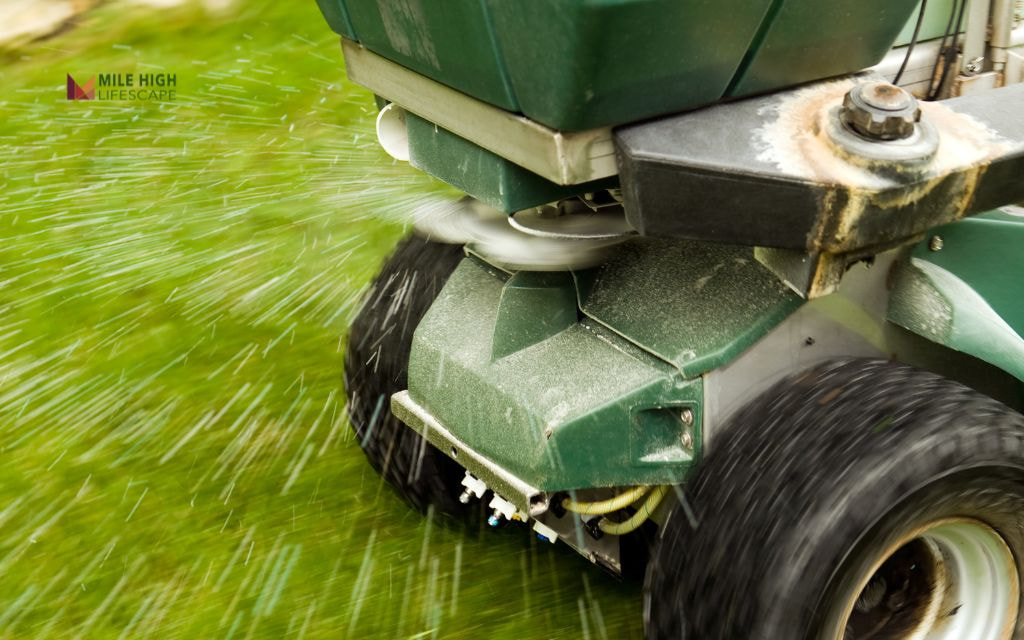Overseeding offers a practical solution to restore your lawn’s health without the expense and effort of complete replacement. But the question remains: how much grass seed for overseeding do you really need?
Using the right amount of seed makes all the difference in your overseeding success. Too little seed leaves bare spots untouched, while too much creates unnecessary competition among seedlings.
In this blog, you’ll learn about the calculations, techniques, and post-care instructions you need for a successful overseeding project. Let’s dig right in!
Basics of Overseeding
What is overseeding? Overseeding is the process which involves spreading grass seed over an existing lawn without removing the turf. This technique rejuvenates your lawn by introducing fresh grass varieties that fill in bare spots and crowd out weeds.
The benefits of overseeding extend beyond aesthetics:
- Creates denser grass coverage
- Enhances lawn color and texture
- Repairs damaged or thin areas
- Builds resistance against weeds, pests, and drought
- Introduces newer, more resilient grass varieties
Timing matters significantly when overseeding. For Denver’s climate:
- Cool-season grasses (Fescue, Kentucky bluegrass): Overseed in early fall when soil temperatures remain warm but air temperatures cool
- Warm-season grasses (Bermuda, Zoysia): Overseed in late spring to early summer when soil temperatures consistently reach 65°F
The right timing gives new seedlings optimal growing conditions before seasonal stress periods arrive.
Calculating How Much Grass Seed For Overseeding
Determining the right amount of seed doesn’t require complex math. Follow these 3 straightforward steps to calculate exactly how much grass seed for overseeding that your lawn needs:
Step 1: Measure Your Lawn Area
Start by measuring the total area you plan to overseed. For the most accurate results:
- For rectangular lawns: Measure the length and width in feet, then multiply these numbers together. Example: A lawn 50 feet long and 40 feet wide = 50 × 40 = 2,000 square feet
- For irregularly shaped lawns: Break your lawn into basic shapes like rectangles, triangles, or circles.
- Rectangle area = length × width
- Triangle area = (base × height) ÷ 2
- Circle area = 3.14 × radius²
Add all these individual areas together for your total square footage.
- Using technology: Several smartphone apps can measure lawn area using satellite imagery. Apps like “Planimeter” or “LawnSize” can save time with complex layouts.
Tip: Walk the perimeter with a measuring wheel for large or complex yards to get the most accurate measurements.

Step 2: Check the Recommended Seeding Rate
Find your specific grass type in our rate table. The seeding rate tells you how many pounds of seed to use per 1,000 square feet of lawn.
Key factors that determine your ideal seeding rate:
- Current lawn condition: Use higher rates for more damaged lawns
- Grass type: Kentucky Bluegrass needs less seed per area than Tall Fescue
- Seed quality: Higher germination rate seeds may require less quantity
For Denver’s climate, we recommend these standard overseeding rates (there’s a table about this in the next section). Seed labels typically include recommended rates, but these often show new lawn rates. For overseeding, use roughly half of what’s recommended for new lawns.
Step 3: Apply the Formula
Use this simple formula to calculate your total seed needs:
Total Seed Needed (lbs) = (Lawn Area (sq ft) ÷ 1,000) × Seeding Rate
Let’s work through examples for common lawn sizes:
- Example 1: Small front yard (1,500 sq ft) using Kentucky Bluegrass (2.5 lbs per 1,000 sq ft) (1,500 ÷ 1,000) × 2.5 = 1.5 × 2.5 = 3.75 lbs of seed
- Example 2: Medium backyard (3,000 sq ft) using Tall Fescue (4 lbs per 1,000 sq ft) (3,000 ÷ 1,000) × 4 = 3 × 4 = 12 lbs of seed
- Example 3: Large property (5,000 sq ft) using a mixed seed blend (3.5 lbs per 1,000 sq ft) (5,000 ÷ 1,000) × 3.5 = 5 × 3.5 = 17.5 lbs of seed
Pro tip: Purchase about 10% extra seed than your calculation shows. This accounts for any waste during application and ensures complete coverage, especially around edges and corners that often need more attention.
For areas with severe damage or bare patches, consider spot-treating these sections at the higher “new lawn” rate while using the standard overseeding rate for the rest of your lawn. This targeted approach optimizes both your results and seed budget.
Recommended Grass Seed Rates
For precise calculations, refer to these standard overseeding rates for common grass types in the Denver area:
| Grass Type | Overseeding Rate (lbs/1,000 sq. ft.) | New Lawn Rate (lbs/1,000 sq. ft.) |
| Kentucky Bluegrass | 2-3 lbs | 4-5 lbs |
| Perennial Ryegrass | 5-7 lbs | 10-12 lbs |
| Tall Fescue | 3-5 lbs | 8-10 lbs |
| Fine Fescue | 3-4 lbs | 5-7 lbs |
| Bermuda Grass | 1-2 lbs | 2-3 lbs |
| Buffalo Grass | 2-3 lbs | 4-6 lbs |
For overseeding, use the lower end of the range for healthy lawns with minor thinning and the higher end for lawns with noticeable bare patches.

Factors Influencing Seeding Rates
Several key factors determine how much grass seed for overseeding your lawn truly needs beyond the basic calculations. Understanding these variables helps you adjust your seeding rate for optimal results:
Grass Species Characteristics
Different grass types require different amounts of seed because of their inherent properties:
Seed Size and Weight
Kentucky Bluegrass seeds are tiny—approximately 1.5 million seeds per pound. In contrast, Tall Fescue has only about 230,000 seeds per pound. This dramatic difference explains why Kentucky Bluegrass needs fewer pounds per square foot than Tall Fescue.
Growth Patterns
- Spreading varieties: Kentucky Bluegrass and Bermuda grass spread horizontally through rhizomes or stolons after establishment. These varieties fill in gaps naturally over time, requiring less seed initially.
- Bunch-forming varieties: Tall Fescue and Perennial Ryegrass grow in clumps without spreading. These types need higher seeding rates to create dense coverage since each seed must grow where it lands.
Germination Rates
Fresh, high-quality Kentucky Bluegrass might have 85% germination rates, while economy seed mixes might only achieve 70-75%. Check the seed label for the germination percentage—lower rates require proportionally more seed.
Current Lawn Condition
The state of your existing lawn significantly impacts how much seed you’ll need:
- Minor Thinning (10-20% bare areas): For lawns with good coverage but slight thinning, use the lower end of the recommended overseeding rate. These lawns need just enough new grass to fill small gaps and increase density.
- Moderate Thinning (20-40% bare areas): Use the middle to upper range of the recommended overseeding rate. These lawns have noticeable bare patches that need substantial reinforcement.
- Severe Thinning (40-60% bare areas): Apply seed at the maximum overseeding rate or consider using rates closer to new lawn establishment. These lawns have extensive damage and require significant restoration.
- Weed Pressure: Lawns with high weed populations benefit from higher seeding rates. Dense new grass growth competes effectively with weeds, preventing their establishment.
Soil Preparation Quality
How you prepare your soil dramatically affects seed germination success:
- Well-Prepared Soil: Lawns that receive thorough aeration, dethatching, and leveling before overseeding can achieve 80-90% germination rates, allowing you to use standard seeding rates with confidence.
- Moderately Prepared Soil: If you’ve mowed and raked but skipped aeration, increase your seeding rate by 15-20% to compensate for reduced seed-to-soil contact.
- Minimally Prepared Soil: Without proper preparation, seed germination can drop by half. If circumstances prevent thorough preparation, increase your seeding rate by at least 25-30%.
Environmental Factors in Denver
Our unique Colorado climate creates special considerations:
Altitude Effects
Denver’s higher elevation means more intense UV radiation, which can stress new seedlings. Consider increasing seeding rates by 10-15% compared to sea-level recommendations.
Water Restrictions
If you face watering restrictions, focus on thorough soil preparation rather than increasing seed amounts. Well-prepared soil maximizes germination of the seed you apply, making each seed count.
Slope Considerations
For sloped areas where runoff occurs, increase seeding rates by 20-25%. Slopes lose more seed to erosion during germination, especially during Colorado’s sudden rain events.

Adjusting Your Final Calculation
Use these factors to fine-tune your basic calculation:
- Start with your base calculation from the standard formula
- Assess your lawn’s condition and preparation quality
- Adjust up or down based on the factors above
For example, if your calculation showed you need 10 pounds of seed, but you have poor soil preparation and moderate slope, consider increasing to 12-13 pounds to ensure success.
Remember that overseeding success depends more on proper preparation and aftercare than simply applying more seed. When in doubt, it’s better to prepare thoroughly and use the standard rate than to skimp on preparation and compensate with extra seed.
Steps to Successful Overseeding
Follow these essential steps for optimal results:
Step 1: Prepare the Lawn
Mow your lawn to 1.5-2 inches height to increase sunlight reaching the soil. Remove grass clippings and debris. For best results, aerate the lawn to reduce soil compaction and create channels for seed, water, and nutrients.
Step 2: Spread the Seeds
Use a broadcast or drop spreader for even distribution. Divide your calculated seed amount in half and apply in two directions – one north-south, one east-west – to ensure uniform coverage.
Step 3: Ensure Seed-to-Soil Contact
Lightly rake the area to incorporate seeds into the top 1/4 inch of soil. For larger areas, consider using a lawn roller filled 1/3 with water to press seeds into contact with soil.
Step 4: Establish a Watering Schedule
Keep the top inch of soil consistently moist until germination occurs. This typically means light watering 2-3 times daily for the first 7-14 days. Once seedlings reach 1 inch tall, reduce frequency but increase depth of watering.
Common Mistakes to Avoid
Even experienced homeowners make these overseeding errors:
- Overseeding at the Wrong Time: Timing significantly impacts germination success. Seeding during summer heat or late fall cold reduces germination rates by up to 70%. Follow the seasonal guidelines for your grass type.
- Applying Incorrect Seed Amounts: Using too much seed creates competition among seedlings for water, nutrients, and space. This leads to weak grass plants susceptible to disease. Using too little seed leaves bare patches and allows weeds to establish.
- Skipping Soil Preparation: Seeds need direct contact with soil to germinate. Without proper preparation, up to 60% of your seed may never grow. Always mow, dethatch, and preferably aerate before overseeding.
- Neglecting Post-Overseeding Care: New seedlings require consistent moisture and minimal traffic. Insufficient watering causes patchy results, while excessive foot traffic can destroy emerging grass. Protect your investment with proper aftercare.

Frequently Asked Questions (FAQs)
How often should I overseed my lawn?
For optimal lawn health in Denver’s climate, overseed cool-season grasses every 1-2 years and warm-season grasses as needed when thinning occurs.
Can I walk on newly overseeded grass?
Avoid foot traffic for 2-3 weeks after seeding. New seedlings have undeveloped root systems and damage easily.
Should I fertilize before or after overseeding?
Apply starter fertilizer (high in phosphorus) immediately after overseeding to support root development. Avoid high-nitrogen fertilizers until new grass has been mowed 2-3 times.
How soon will I see results?
Germination typically occurs in 5-21 days depending on grass type: Ryegrass (5-10 days), Tall Fescue (7-14 days), and Kentucky Bluegrass (14-21 days).
Can I mix different grass seeds when overseeding?
Yes, using a mix of compatible grass types often creates a more resilient lawn. Ensure all varieties have similar watering requirements and sun preferences.
Conclusion
Overseeding thickens thinning lawns when executed with precision. Success depends on accurate seed calculations, proper timing, thorough site preparation, and consistent aftercare.
When considering how much grass seed for overseeding, measure the area, select the right seed type, and distribute evenly for uniform coverage. Proper maintenance fosters deeper roots, enhanced density, and greater resilience to Colorado’s climate.
At Mile High Lifescape, we apply tested methods suited to Denver’s unique conditions. Whether you handle overseeding yourself or rely on professionals, following these principles ensures strong, lasting results.
